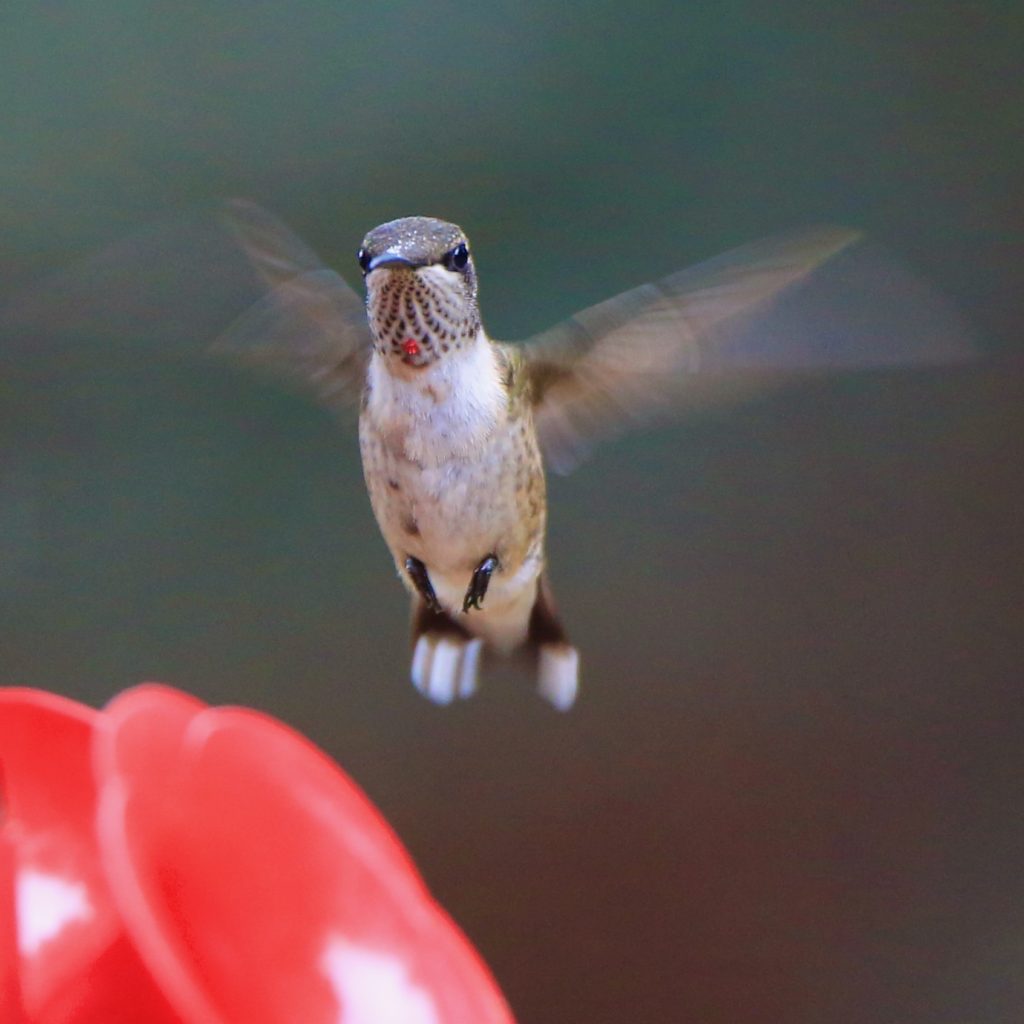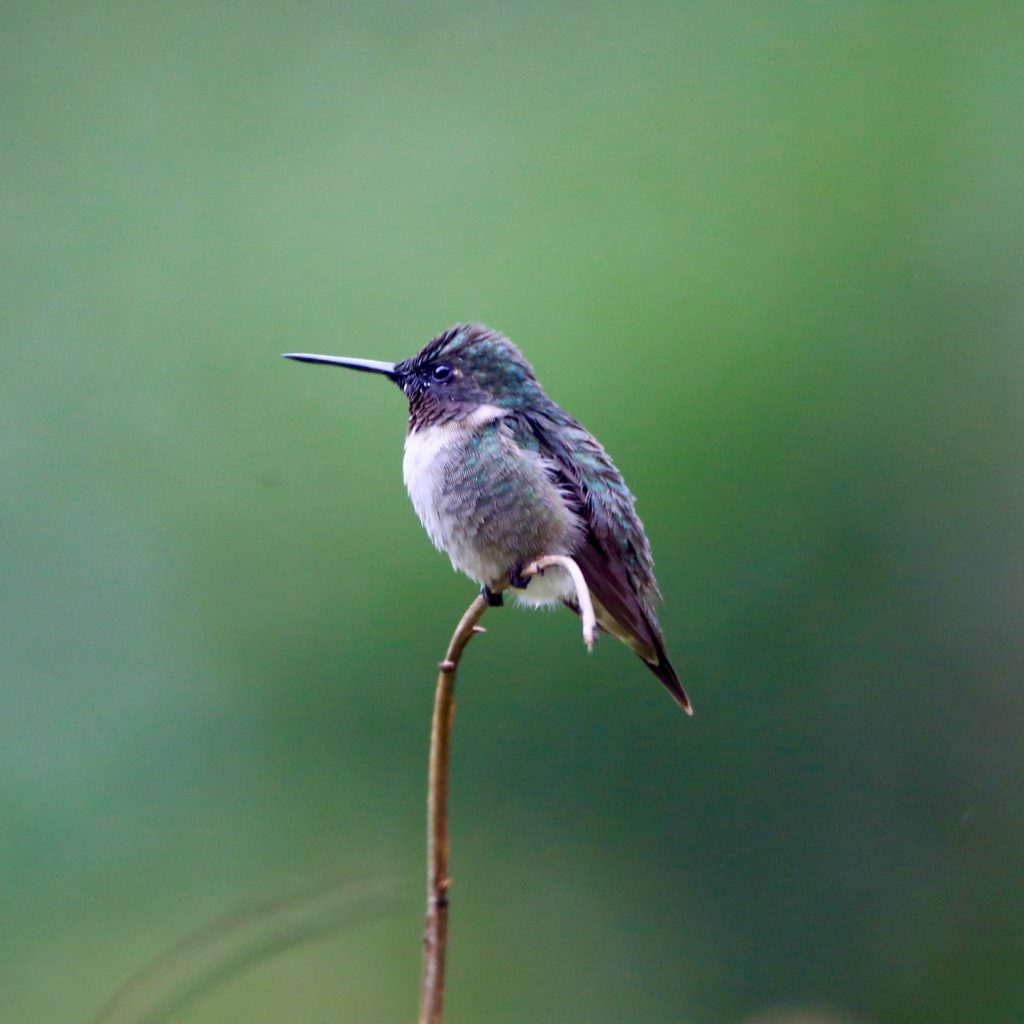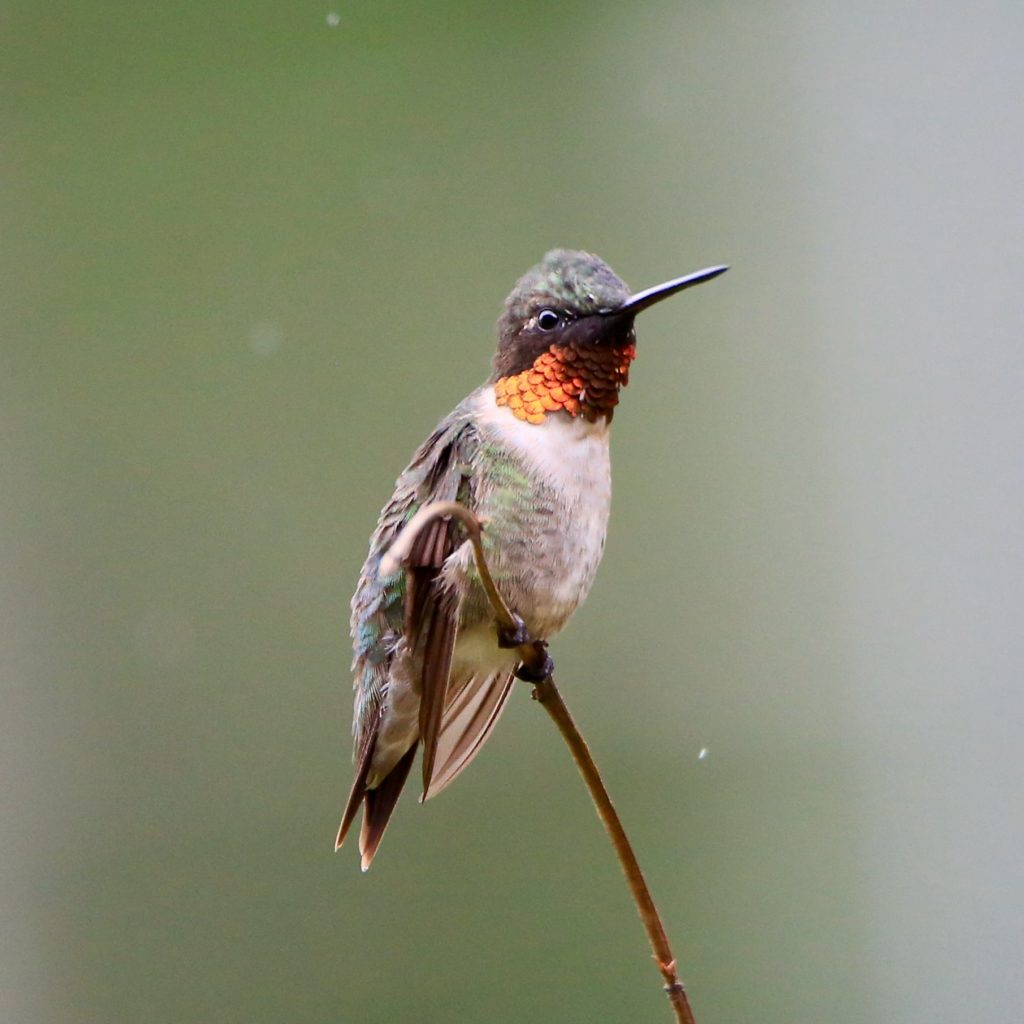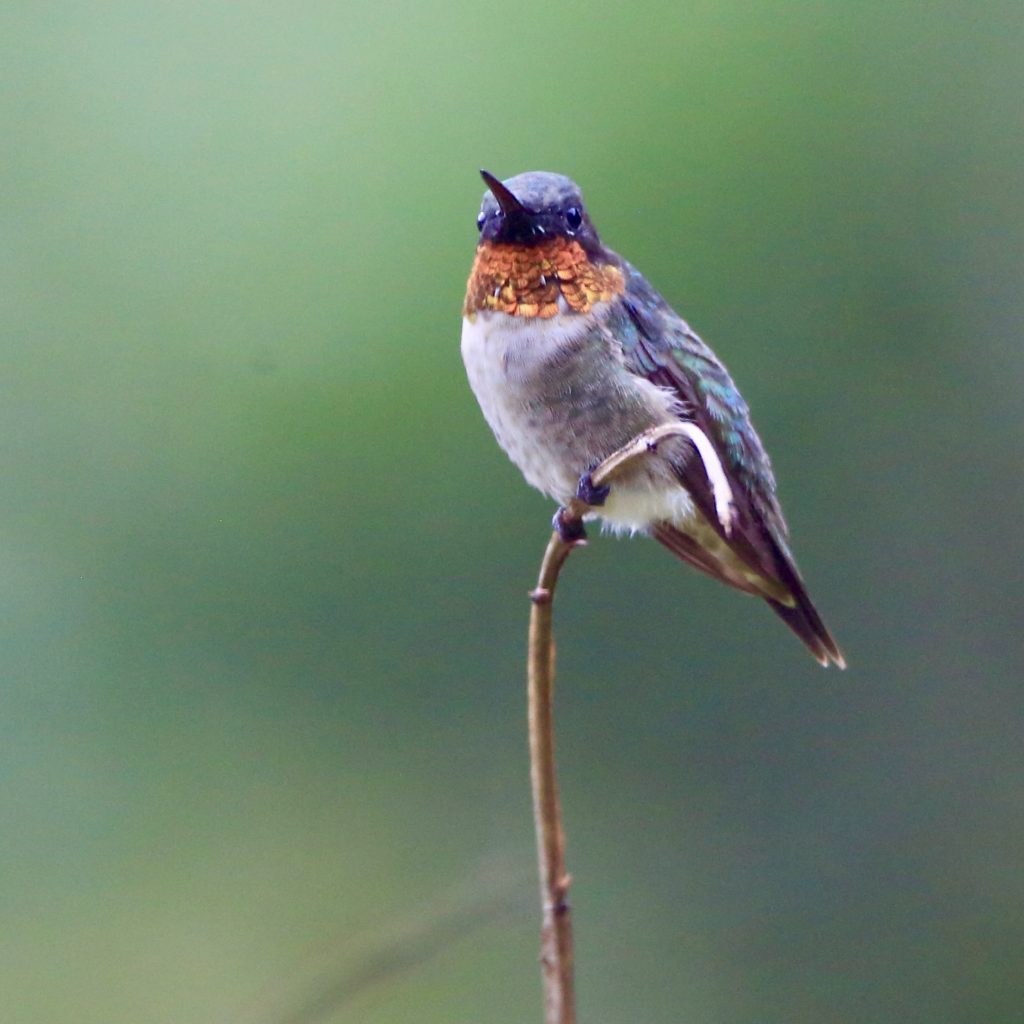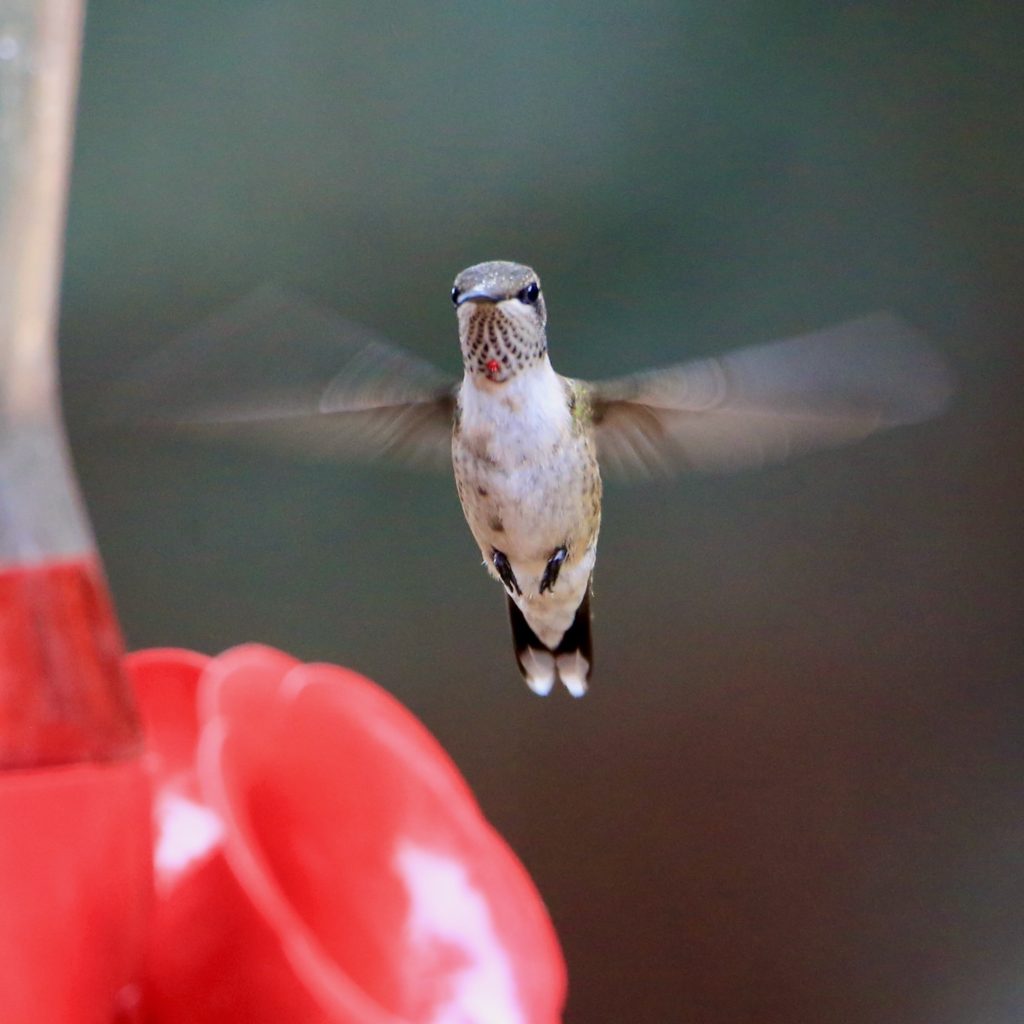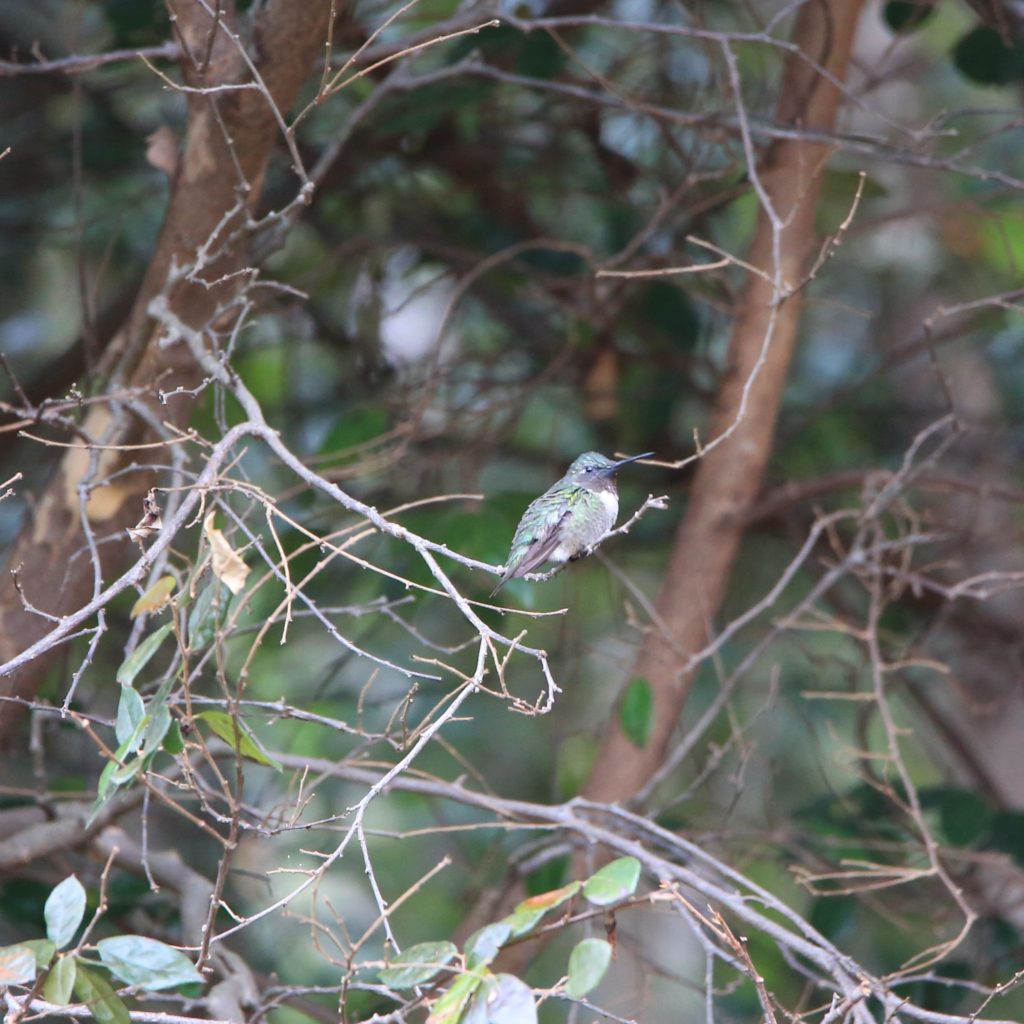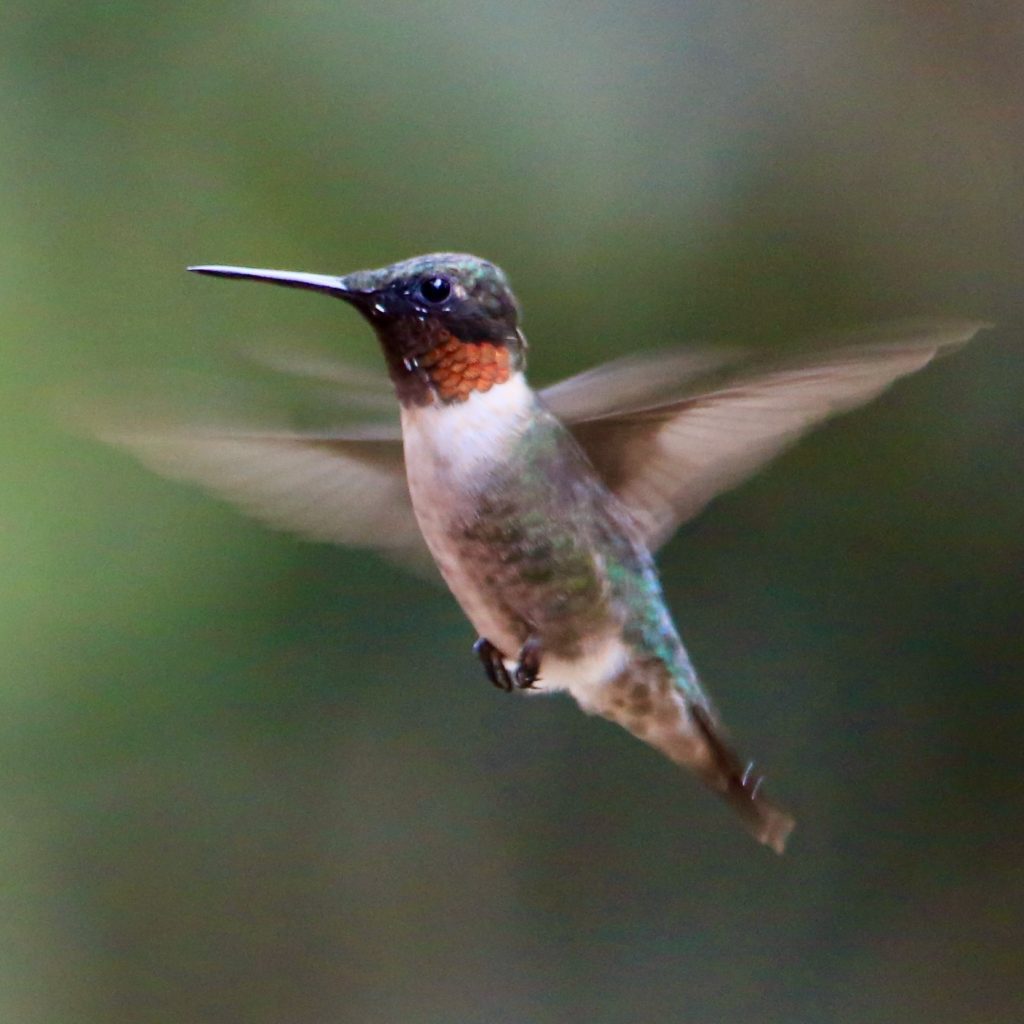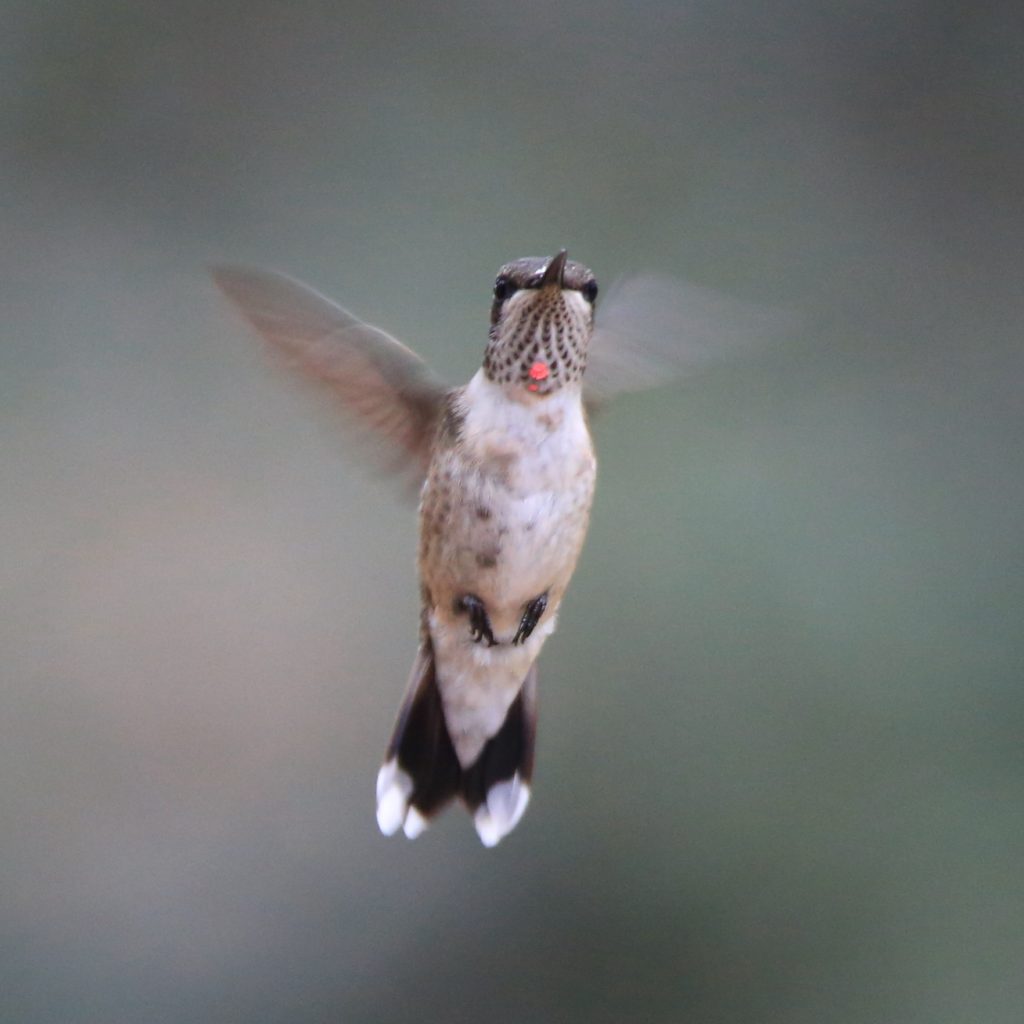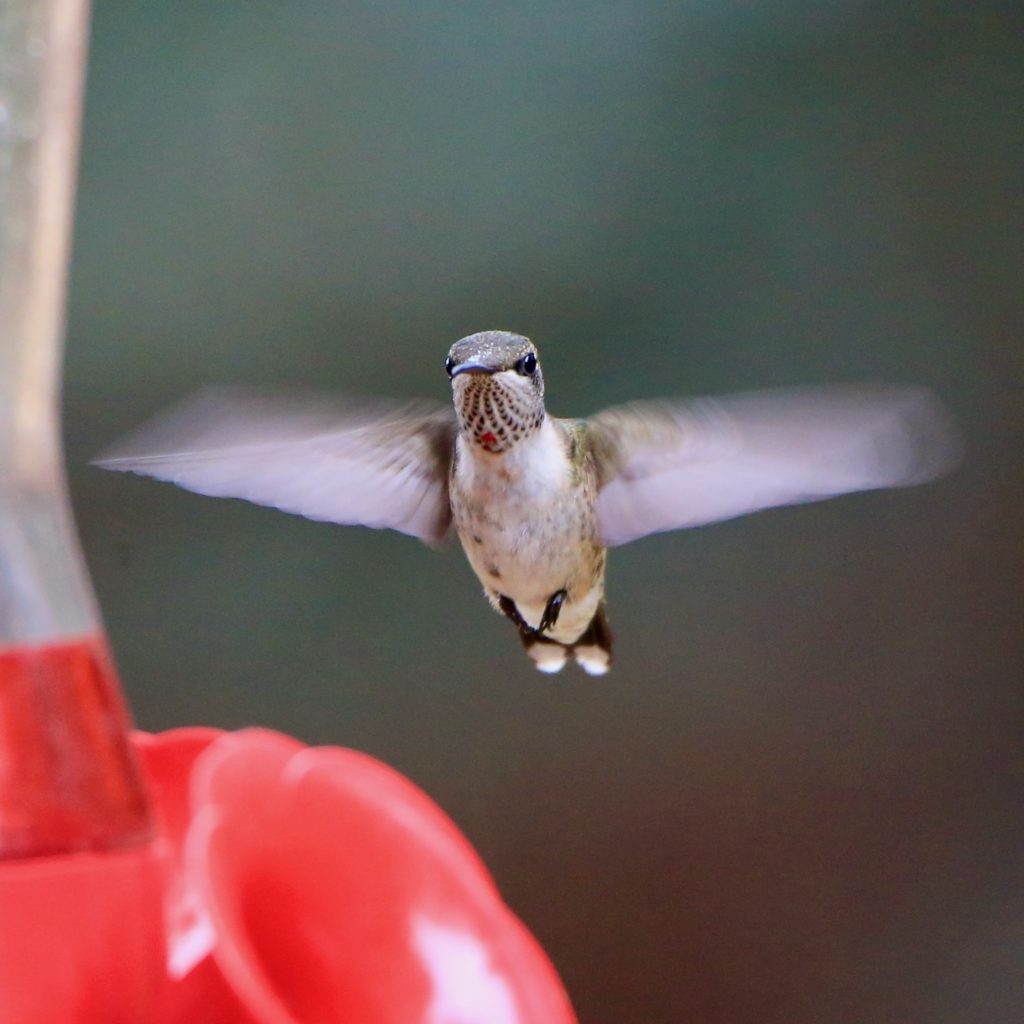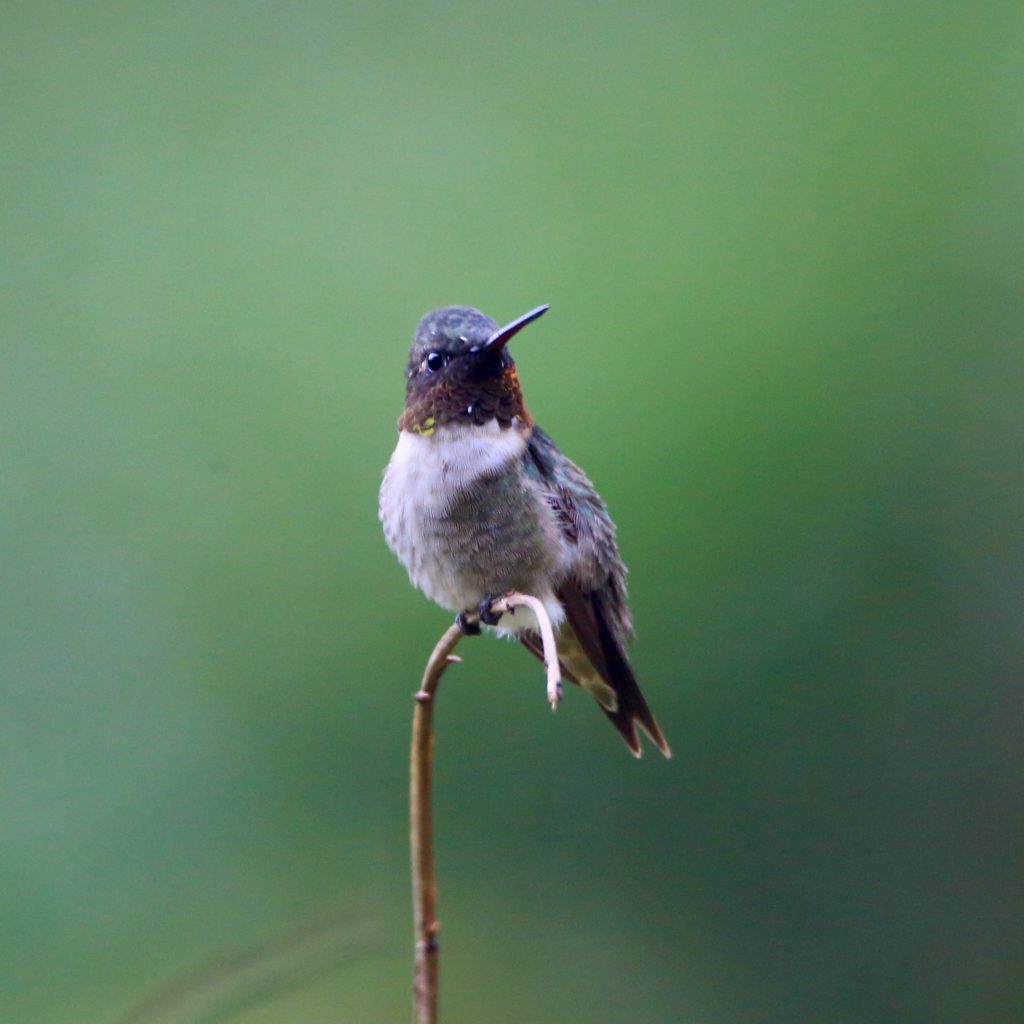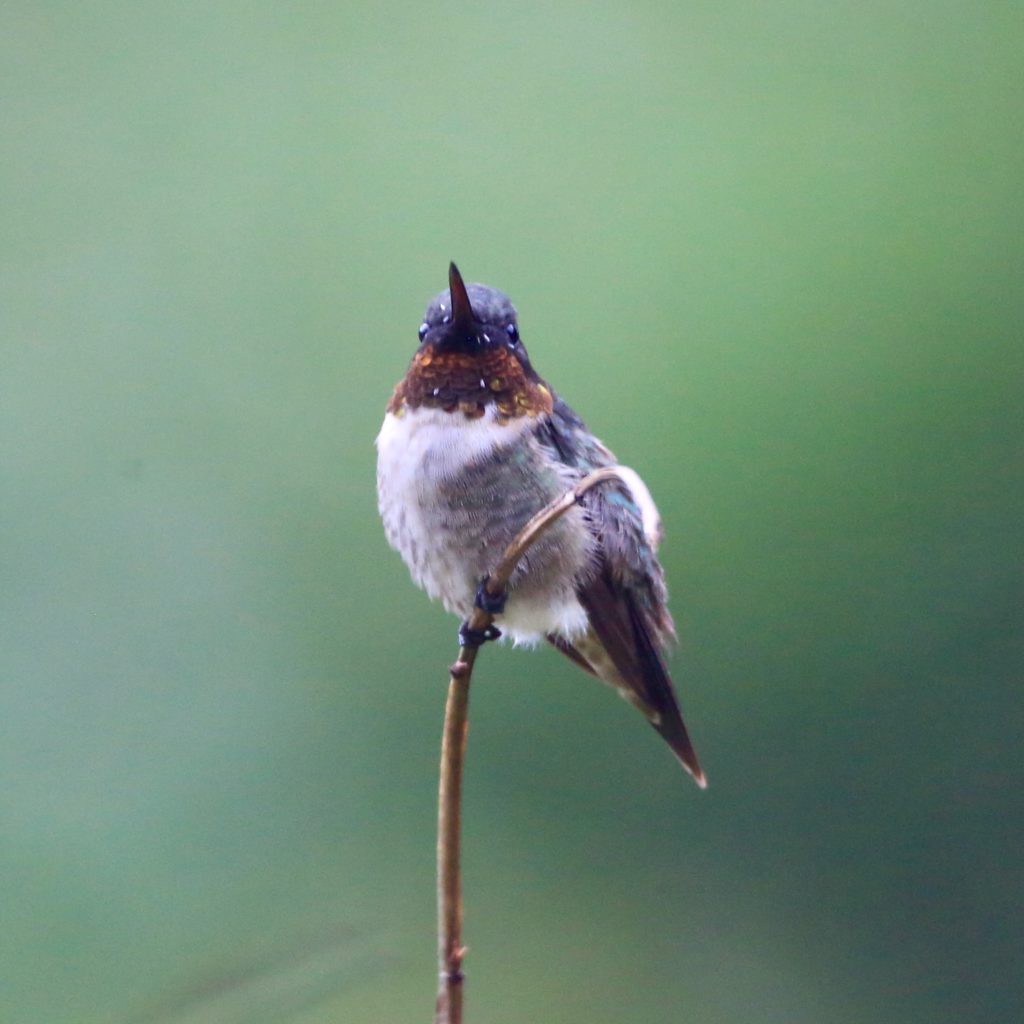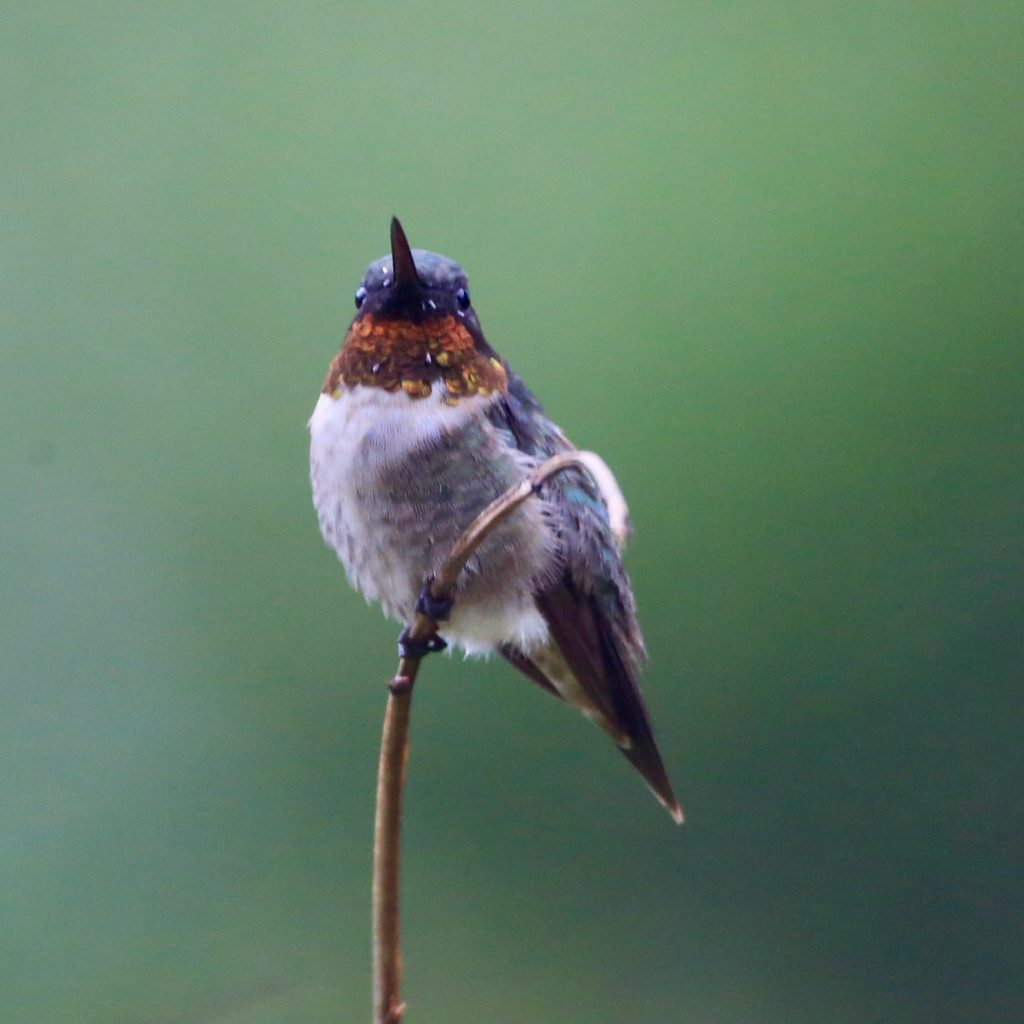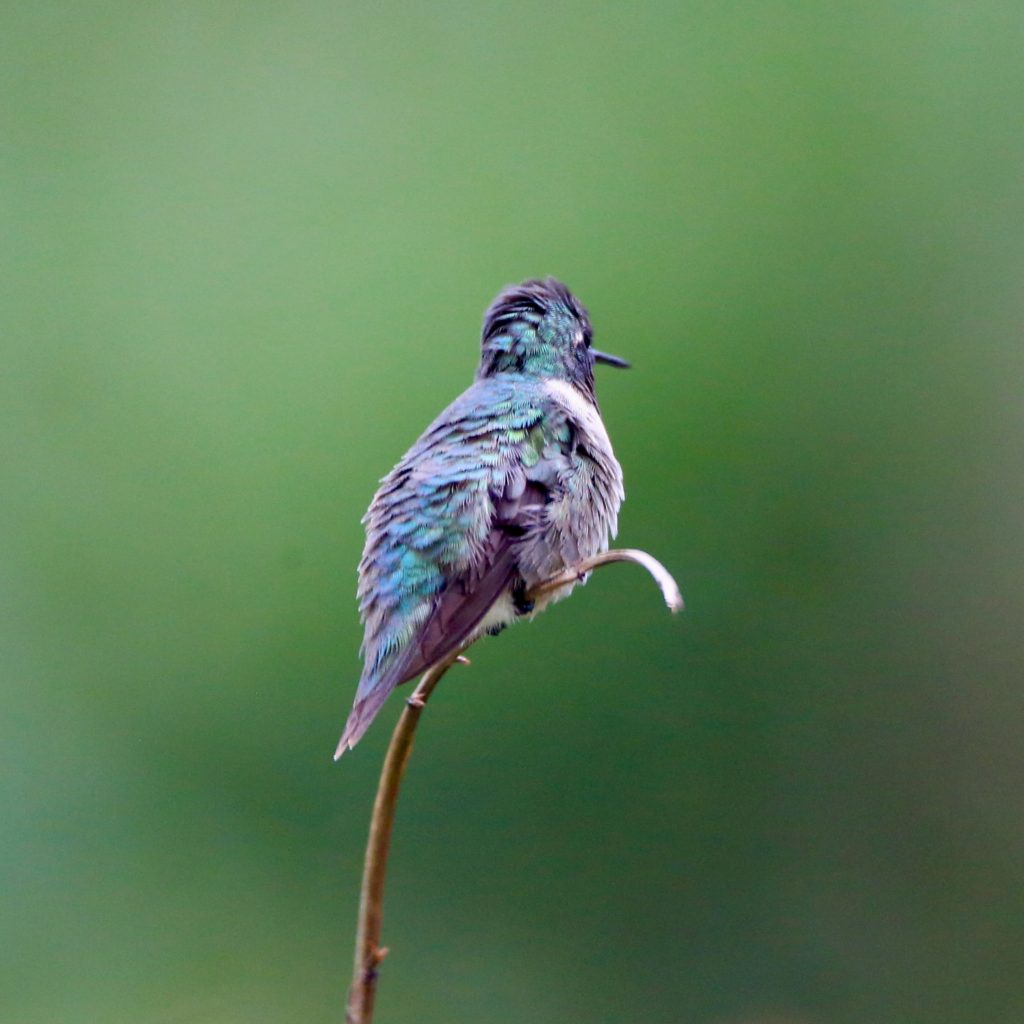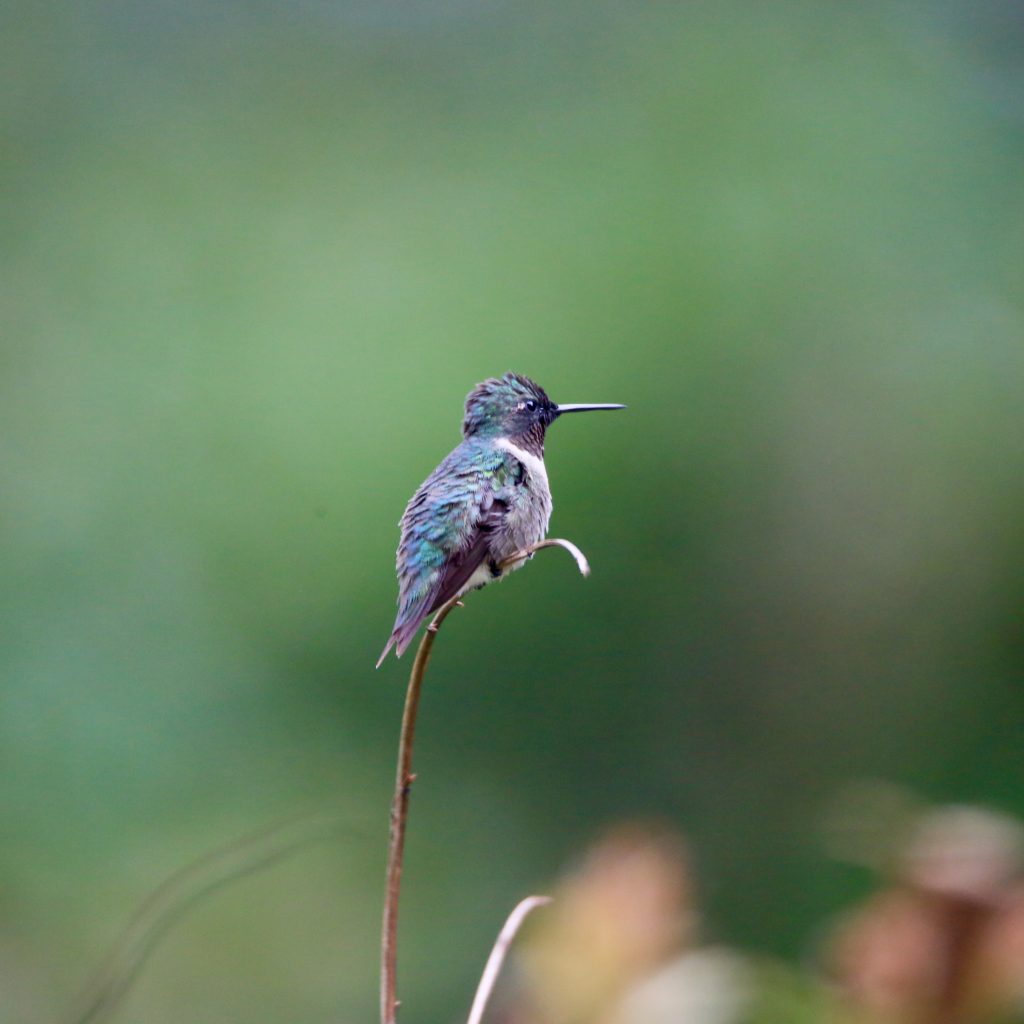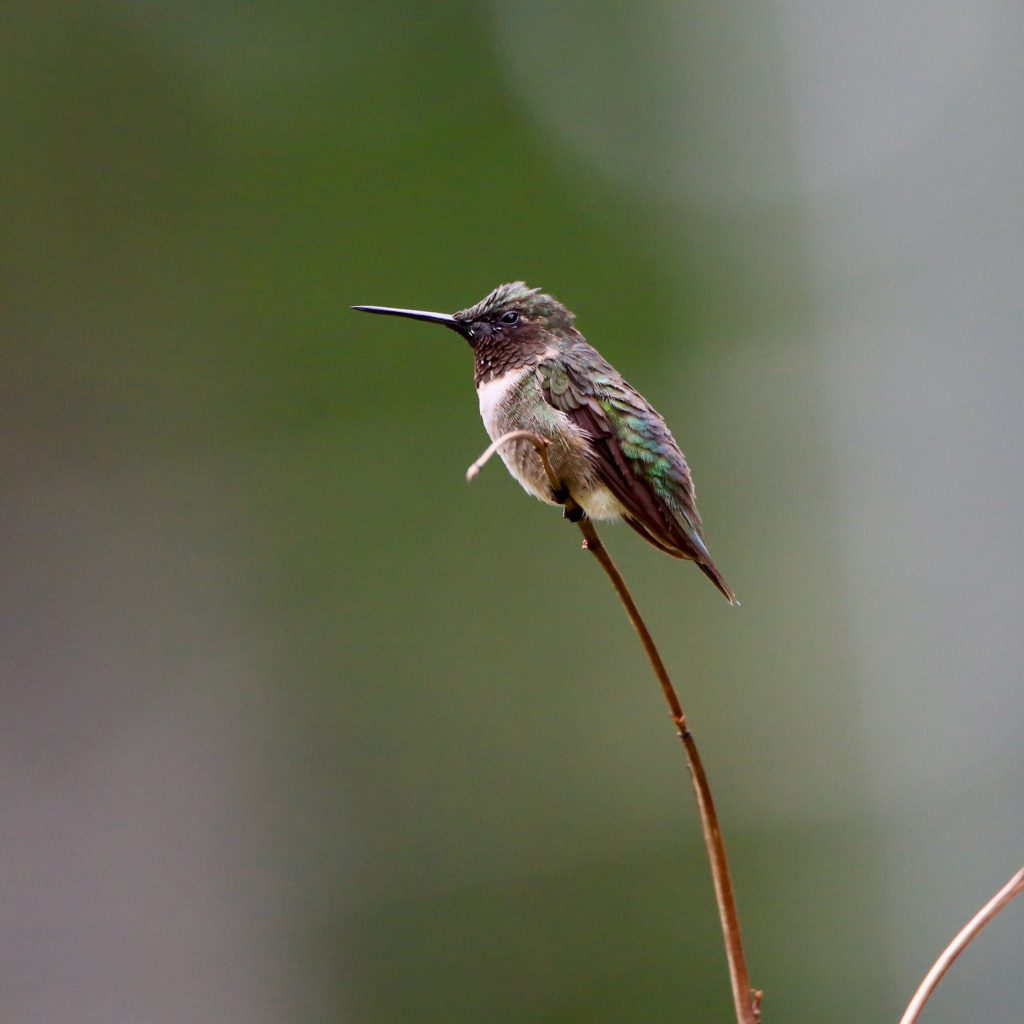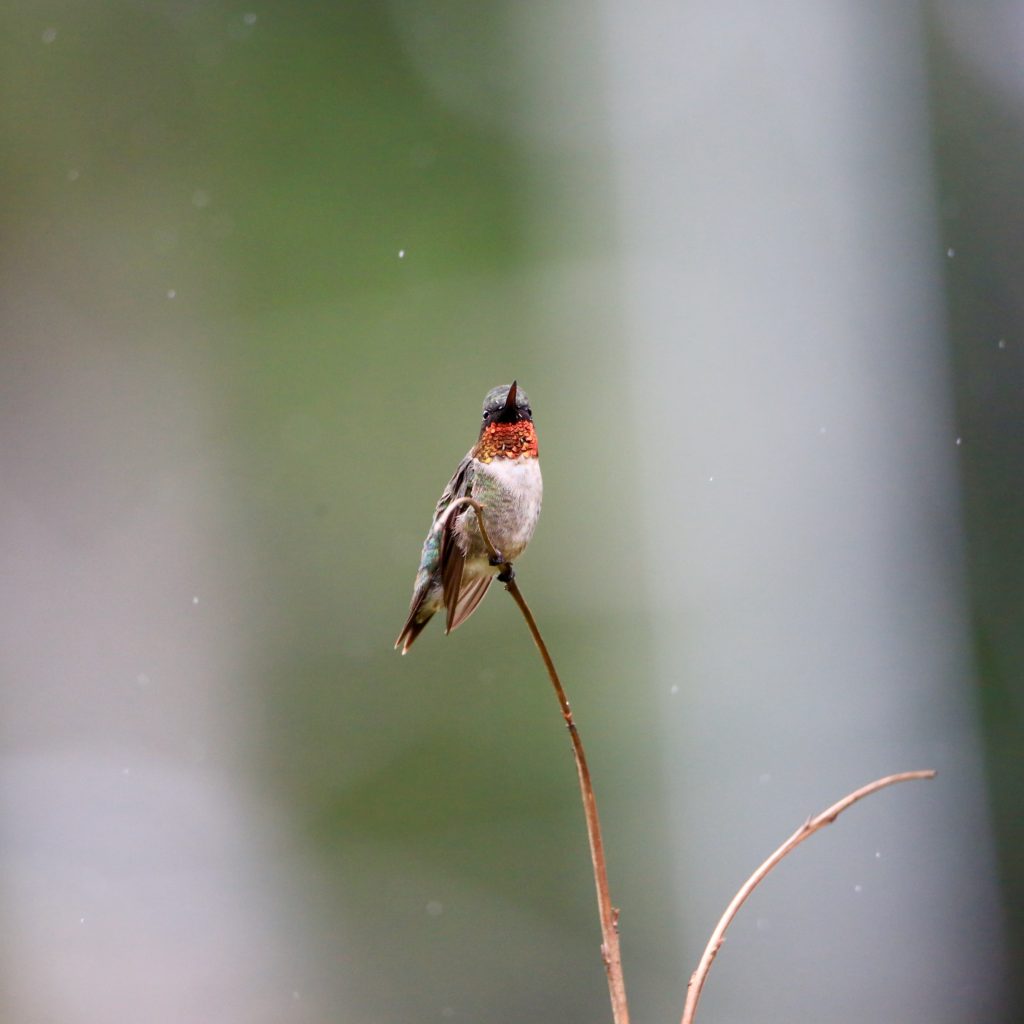
Ruby-throated Hummingbird
A Ruby-throated Hummingbird is a fun bird to see while bird watching. Below are some tips to help you identify Ruby-throated Hummingbirds. We have also put together a list of fun Ruby-throated Hummingbird t-shirts, Ruby-throated Hummingbird bird patches, bird houses, bird feeders, binoculars, stickers and other fun bird watching items.
About Ruby-throated Hummingbirds
This hummingbird, named so after its red throat, is the most common species of hummingbirds seen east of the Mississippi River. It breeds mostly in North America, but can be found in Central America, Mexico and Florida in the winter.
Description and Identification
The adult males have an iridescent red ruby patch on their throat and a fork-shaped tail with a violet sheen. The adult females have a notched tail with green, white and black on their outer feathers. They have plain throats that might be marked with dusky stripes or stipples. Juvenile males look similar to adult females, although their markings are more prominent. These small hummingbirds have long, slender down-curved bills and short wings that don’t reach their tail while sitting. They have short legs, which prevent them from walking or hopping. Their flight, however, is extremely precise since they can stop or change direction quickly mid-flight. They adjust their position swiftly with extreme control.
Ruby-throated Hummingbird Size
Length: 7 to 9 cm
Weight: 2 to 6 g
Wingspan: 8 to 11 cm
The females differ only in weight, with the males averaging at 3.4 g and the females at 3.8 g.
Ruby-throated Hummingbird Appearance
The adults are metallic green on their upper side and greyish-white on the underside. Their wings range from dark colors to black.
The males have a ruby-red coloration around their throat, hence the name. Around their red throats, they have black feathers that fade out to white on their chests. They have forked black tails with violet highlights.
The females have a notched tail that has bands of green, black and white feathers. Unlike the males, their throats are white with some dusky streaks.
Juveniles resemble the females, but have heavier throat markings.
Ruby-throated Hummingbird Habitat
Ruby-throated Hummingbirds prefer their habitat to contain plenty of open space. They live in open woodlands, forest edges, meadows, grasslands and in parks, gardens, and backyards. They can also breed in pine forests and orchards, but they favor deciduous trees such as oak, birch, poplar, hornbeam, and hackery. Males and females both are extremely territorial and aggressive towards other hummingbirds that they might see as competition in the area.
They reside in pine and deciduous forests, forest edges, orchards and some gardens. They are highly migratory and can migrate over 900 miles across The Gulf of Mexico in one non-stop journey in winter.
Range and Migration

Ruby-throated Hummingbirds are Eastern North America’s sole breeding hummingbirds. They occupy the largest breeding range of any North American hummingbird. Migration starts soon into the year. By August, the breeding season ends, and the males and females fly their own ways. They can be spotted during winters in Mexico and Florida. They also spend the winter in Central America and parts of Mexico, after breeding in areas as far north as Canada. Some birds can migrate with a nonstop 900-mile journey.
Ruby-throated Hummingbird Feeding
Like many birds, these ones have good color vision and can see parts of the light spectrum that the human eye cannot. They use their vision to identify yellow and red flowers, which are usually their main food. Ruby-throated Hummingbirds have extremely high metabolic rates. They feed multiple times during the day. They enter into hypothermic torpor on cold nights to preserve energy. Their main source of nutrition is nectar from flowers and flowering trees, although they also feed on spiders and small insects. Adult birds might also feed on arthropods for protein. They use their long, extendable tongue to catch their prey. The juveniles are usually fed arthropods and insects since simply relying on nectar provides an insufficient source of protein.
They are primarily nectar feeders. They feed on small insects such as spiders to get protein and other required nutrients. They also feed on sap from sap suckers’ wells.
The juveniles are fed insects until they are old enough to fly out and obtain nectar for themselves.
Nesting
These birds have grown accustomed to human habitation and often build their nests on wires, chains and extension cords. In natural settings, their nests are found on deciduous and coniferous trees. The males and females do not stay in the same nest for very long, since Ruby-throated Hummingbirds are mostly solitary. After breeding and courtship are over, their pairing usually ends in time for migration. The females build the nest in a protected location in a shrub or a tree. Their nests are made with bud scales, with lichen on the exterior, lined with plant down and animal hair. It is bound together with spider silk. As with other hummingbirds, the nests of Ruby-throated Hummingbirds are made by the females and the young ones are her responsibility.
Ruby-throated Hummingbird Life and Behavior
They are solitary birds and are also highly territorial and aggressive. The longest lasting contact between adults is only during mating and courtship, which can last for 6 minutes in total.
The males take no part in raising the young and the females build nests and take care of the juveniles on their own until they are ready to leave the nests.
Ornithology
Bird Watching Academy & Camp Subscription Boxes
At Bird Watching Academy & Camp we help kids, youth, and adults get excited and involved in bird watching. We have several monthly subscription boxes that you can subscribe to. Our monthly subscription boxes help kids, youth, and adults learn about birds, bird watching, and bird conservation.
Bird Watching Binoculars for Identifying Ruby-throated Hummingbirds
The most common types of bird watching binoculars for viewing Ruby-throated Hummingbirds are 8×21 binoculars and 10×42 binoculars. Bird Watching Academy & Camp sells really nice 8×21 binoculars and 10×42 binoculars. You can view and purchase them here.
Ruby-throated Hummingbird T-shirts
If you love the Ruby-throated Hummingbird you should purchase a Bird Watching Academy & Camp T-shirt. To help support bird conservation we donate 10 percent to bird conservation activities.
Ruby-throated Hummingbird Iron On Patches
Kids, Youth, and Adults love to collect our Bird Watching Academy & Camp iron on patches. Our bird watching patches help you keep track of the birds you have seen an identified. You can also display the patches on our Bird Watching Academy & Camp banners.
The Ruby-throated Hummingbird is a great iron on patch to start your collection with. The patches are durable and can be sewn on or ironed on to just about anything.
Ruby-throated Hummingbird Stickers
Stickers are a great way for you to display your love for bird watching and the Ruby-throated Hummingbird. We sell a monthly subscription sticker pack. The sticker packs have 12 bird stickers. These sticker packs will help your kids learn new birds every month.
Bird Feeders For Ruby-throated Hummingbird
There are many types of bird feeders. Here are our favorite bird feeders for your backyard. We use all of these bird feeders currently. Kids will have a great time watching birds eat at these bird feeders. Using this collection of bird feeders will provide a wide variety and many types of birds.
Best Bird Houses for Ruby-throated Hummingbird
There are many types of bird houses. Building a bird house is always fun but can be frustrating. These 4 bird houses have become our favorites. Getting a bird house for kids to watch birds grow is always fun. We spent a little extra money on these bird houses but they have been worth the higher price and look great.





